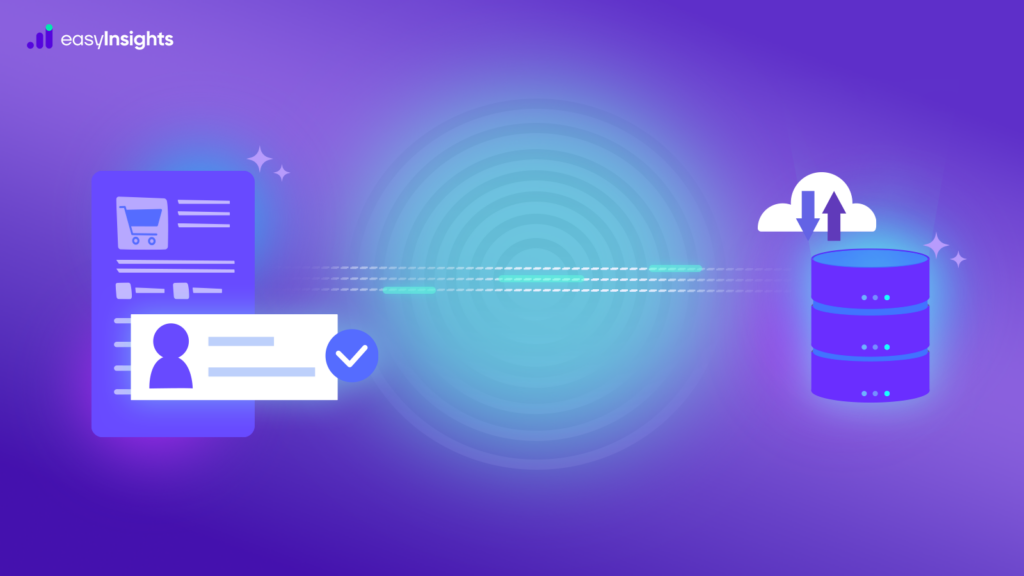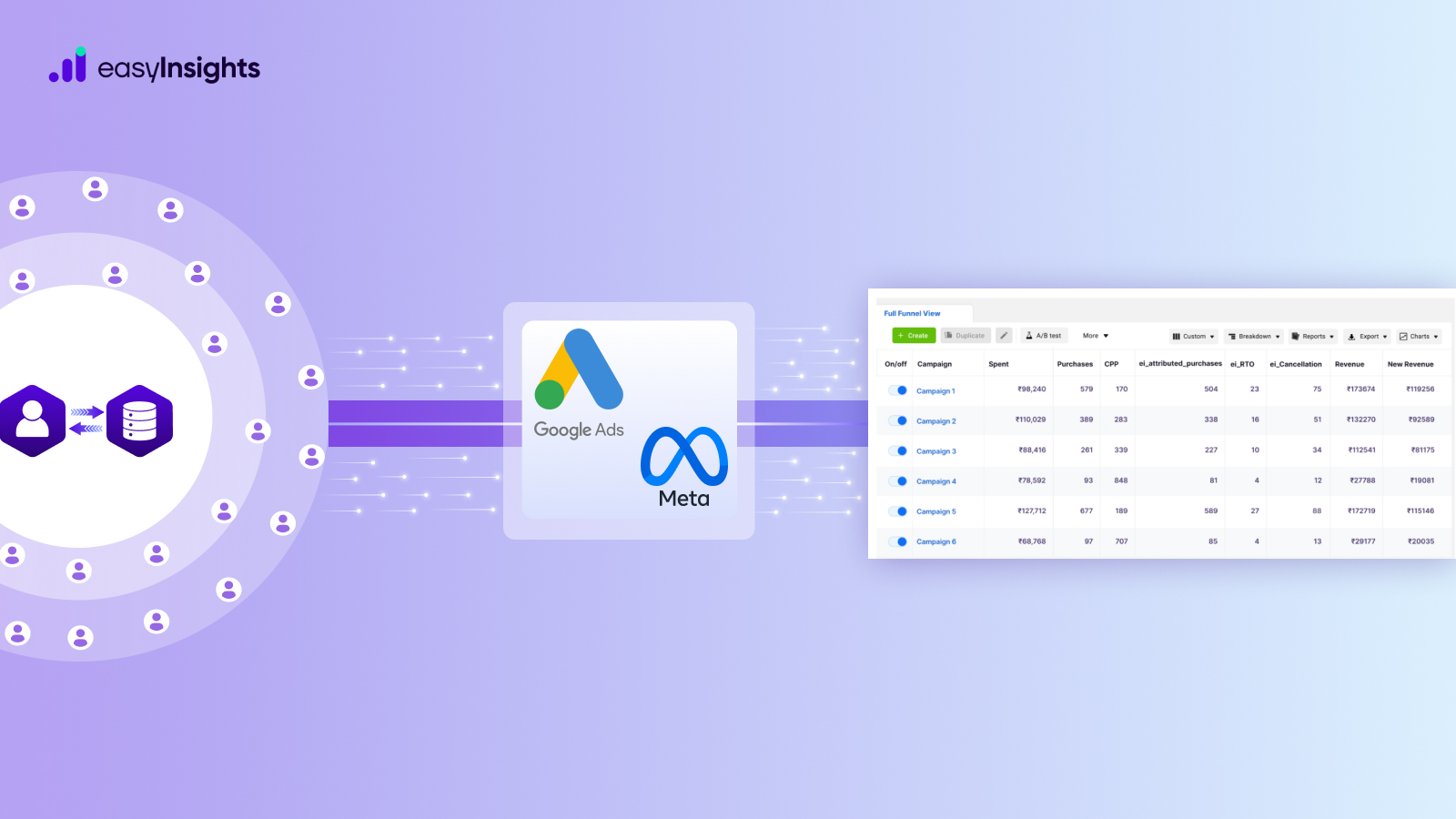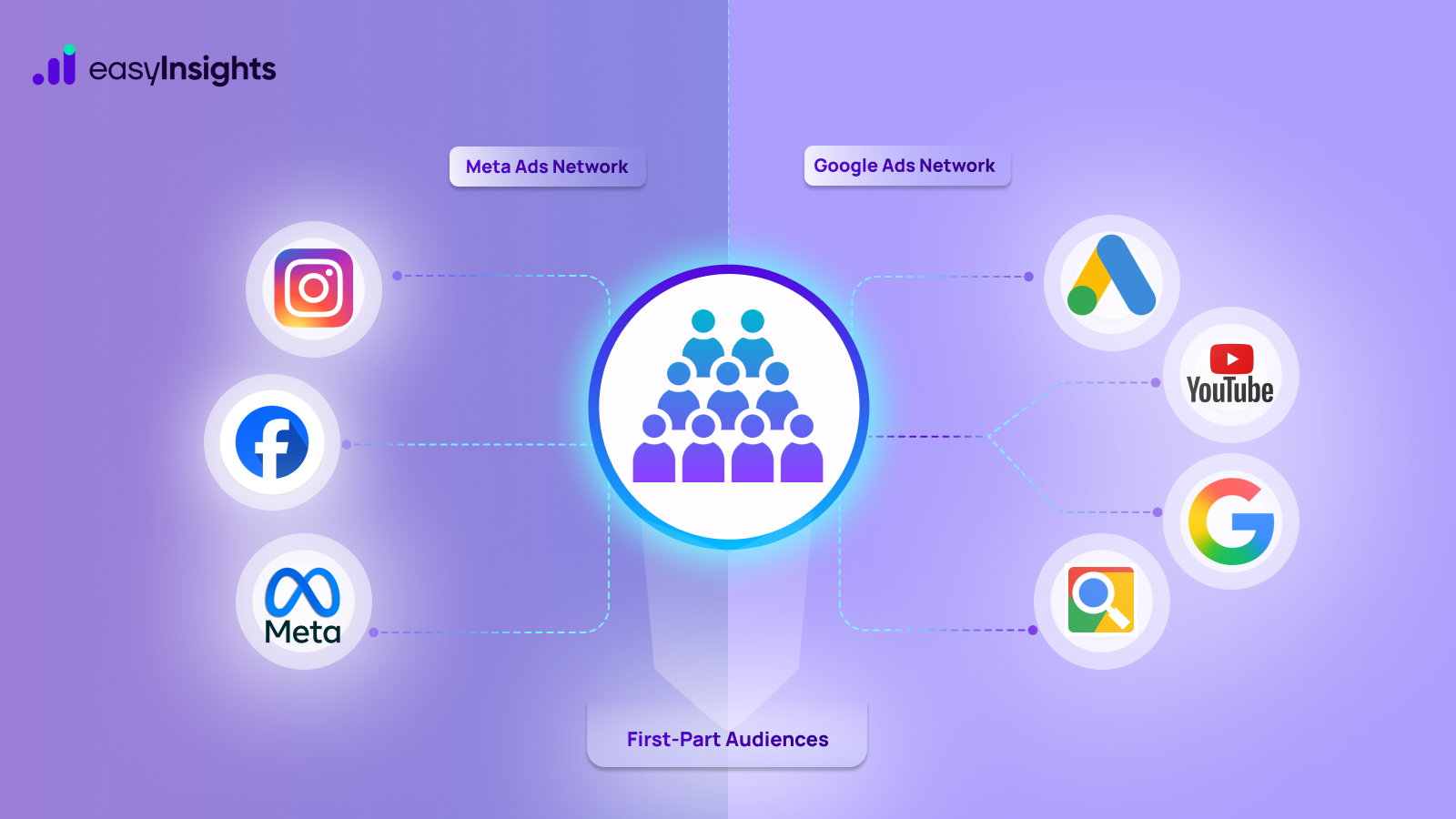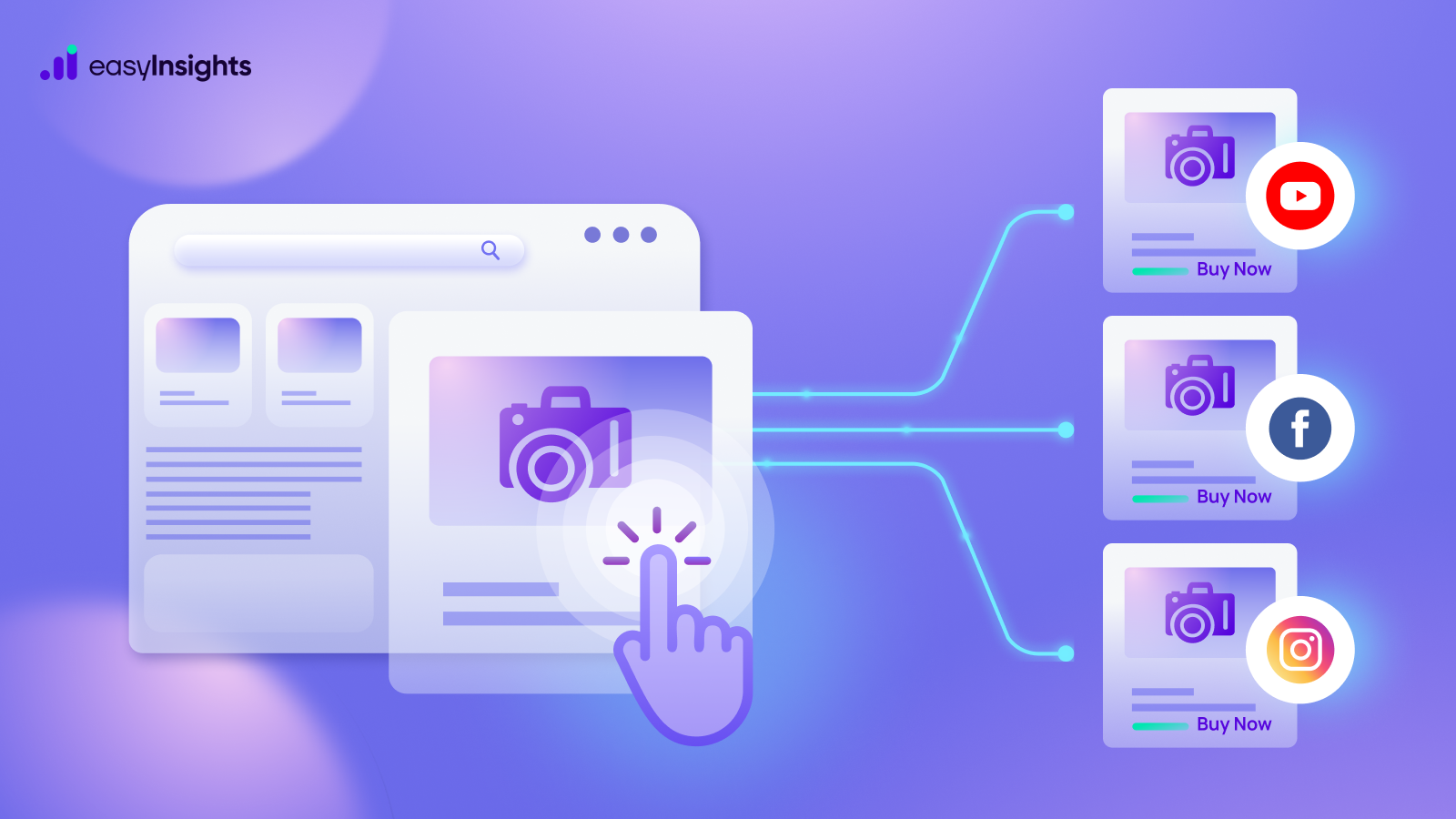
In today’s digital marketing world, the rules of data tracking and user targeting are rapidly changing. With the phase-out of third-party cookies and growing privacy regulations like GDPR and CCPA, marketers are facing serious limitations. Browsers like Safari, Firefox, and now Chrome have made it difficult to track users across websites, breaking the traditional flow of conversion tracking and attribution.
With external data sources becoming unreliable, brands are struggling to track customer journeys and optimize campaigns. That’s why first-party data is collected directly from your own websites, apps, and platforms, has become essential. It’s accurate, privacy-compliant, and grounded in real user behavior.
In this blog, we’ll explore what first-party data means, why it matters in 2025, how you can collect it effectively, and the best ways to use it for smarter, more personalized marketing.
Jump ahead to:
What is First-Party Data?
First-party data refers to the information your brand gathers directly from your own audience through platforms and touchpoints that you own and control. This includes behavior and information gathered from your website, mobile app, email campaigns, CRM, customer service channels, surveys, offline events, and even point-of-sale systems.
This type of data gives you insight into things like: Customer demographics, Purchase history, On-site browsing behavior, Mobile app usage, Email open and click rates, Conversations with your sales or support team, Survey responses and feedback, Declared interests and preferences.
You collect this data naturally as part of doing business, whether it’s through online forms, product purchases, live chat, newsletter signups, or support calls.
Now, compare that with second-party and third-party data, which come from outside sources. Second-party data is another company’s first-party data that you acquire through a direct partnership. Third-party data is aggregated from multiple external sources and sold to advertisers—often without a direct relationship with the user or explicit consent.
In contrast, first-party data is more accurate, privacy-compliant, and directly aligned with your real customers. Stored in systems like your CRM or analytics tools, it helps you personalize experiences, refine targeting, and make smarter decisions.
Also read: First Party Data: The Answer to Third Party Cookie Loss
Why First-Party Data Is More Important Than Ever
In present situations, first-party data is no longer just a bonus; it’s a necessity. It helps you stay ahead of competitors, deliver more relevant experiences, and truly understand your customers. Let’s explain why it matters now more than ever, and how you can use it to your advantage.
Turn Data Into Personalized Experiences
Today’s consumers are smart. They know they have options, and they expect brands to know them too. That means offering tailored experiences instead of generic ones.
Luckily, first-party data gives you the right tools. Because it comes straight from your audience through purchases, site visits, emails, and more, you get accurate information about what they like, need, and care about.
Example: If someone always buys skincare products from your store, you can recommend matching items, show them how-to content, or offer early access to similar products.
When you use first-party data to create personalized experiences, your customers feel understood, and that builds trust, loyalty, and long-term relationships.
Privacy Matters More Than Ever
With growing concerns about privacy and stricter laws like GDPR and CCPA, people are becoming more cautious about sharing their information online. They want to know:
- What data are you collecting
- Why are you collecting it
- How do you plan to use it
That’s where first-party data shines. Since you’re collecting it directly, often with consent, it’s much safer, more ethical, and legally compliant. But remember: with great data comes great responsibility. Use it wisely and transparently, or risk losing your customers’ trust.
Smart Ways to Use First-Party Data
First-party data isn’t just for storage – it’s meant to drive action. Here are practical ways to make it work for your business:
1. Personalize Your Website or App Experiences
Show users content, products, or offers based on their past behavior—like pages viewed, items added to cart, or content types they engage with most.
2. Improve Ad Targeting
Use purchase history, site visits, or form submissions to build high-intent audiences. This way, your ads reach people who are more likely to convert.
3. Predict Customer Behavior
Analyze patterns in browsing or buying journeys to anticipate what a user might do next, such as leaving a page, completing a purchase, or upgrading a plan.
4. Get Smarter About Your Audience
First-party data also helps you understand larger audience behaviors. You can see what types of content get the most attention, where people drop off during the shopping journey, or which mobile app features people love the most.
Also read: Establishing First-Party Data Strategies
How to Collect First-Party Data
Collecting first-party data might sound technical, but it’s easier than most people think. The key is to use the platforms and tools you already have to better understand your audience. Here are five practical ways to do that:
1. Track Website Behavior
Your website is one of the most powerful sources of first-party data. By using server-side tracking, you can collect accurate user data directly from your own servers. This method helps you bypass browser limitations, cookie restrictions, and ad blockers—giving you more reliable insights while staying compliant with modern privacy regulations.
2. Use Lead Generation Forms
Forms are a direct and consent-based way to gather data. Whether someone is downloading an eBook, requesting a quote, or signing up for your newsletter, they’re voluntarily sharing information like their name, email, job title, or interests—which makes it high-quality, first-party data.
3. Send Surveys and Feedback Forms
Surveys and feedback forms let you hear directly from your customers. This can help you understand their satisfaction, preferences, and pain points—valuable insights that you can use to improve your products or services.
4. Rely on CRM Systems
Your CRM (Customer Relationship Management) tool holds a wealth of first-party data. It keeps a record of every interaction a customer has with your business—purchases, support inquiries, emails, and more. This data can help you personalize communication and build stronger customer relationships.
5. Monitor Email Interactions
Your email platform tracks how people interact with your messages—like who opens them, what links they click, and how often they engage. All of this is first-party data that can be used to fine-tune your email strategy and better understand audience behavior.
Tools to Help You Track First-Party Data
Collecting first-party data is powerful, but to truly make the most of it, you need the right tools to organize, analyze, and activate that data across your marketing efforts. Whether you’re a startup or an enterprise, these tools can help you turn raw customer data into real results.
EasyInsights: Track and Activate First-Party Data on Ad Platforms
EasyInsights is a performance marketing intelligence platform designed to help brands centralize, clean, and activate their first-party data in real-time. It integrates seamlessly with ad platforms, CRMs, and analytics tools making it incredibly easy to break data silos and get a 360° customer view. Why EasyInsights stands out:
- Automates data ingestion from multiple marketing and CRM platforms
- Integrate this data with Ad platforms like Meta, Google ads etc.
- Supports clean and privacy-compliant data workflows
- Helps marketers leverage first-party data for audience targeting, attribution, and ROAS optimization
- Provide Multi-touch, Custom attribution model, first and last click attribution models.
If you’re managing multiple ad accounts or data streams and want to get more from your first-party data without the manual mess, EasyInsights is a game-changer.
Conclusion
As privacy rules become stricter and third-party cookies disappear, first-party data has become one of the most valuable tools in marketing. It’s data your customers share with you directly, which makes it more trustworthy and useful.
Using first-party data helps you better understand your audience, create more personalized experiences, and run smarter ads. It’s also safer and more respectful of people’s privacy.
With the right tools like EasyInsights, you can manage and use this data without spending hours on it. In 2025 and beyond, the brands that focus on first-party data will have a big advantage.
To know more, Book a demo today!








